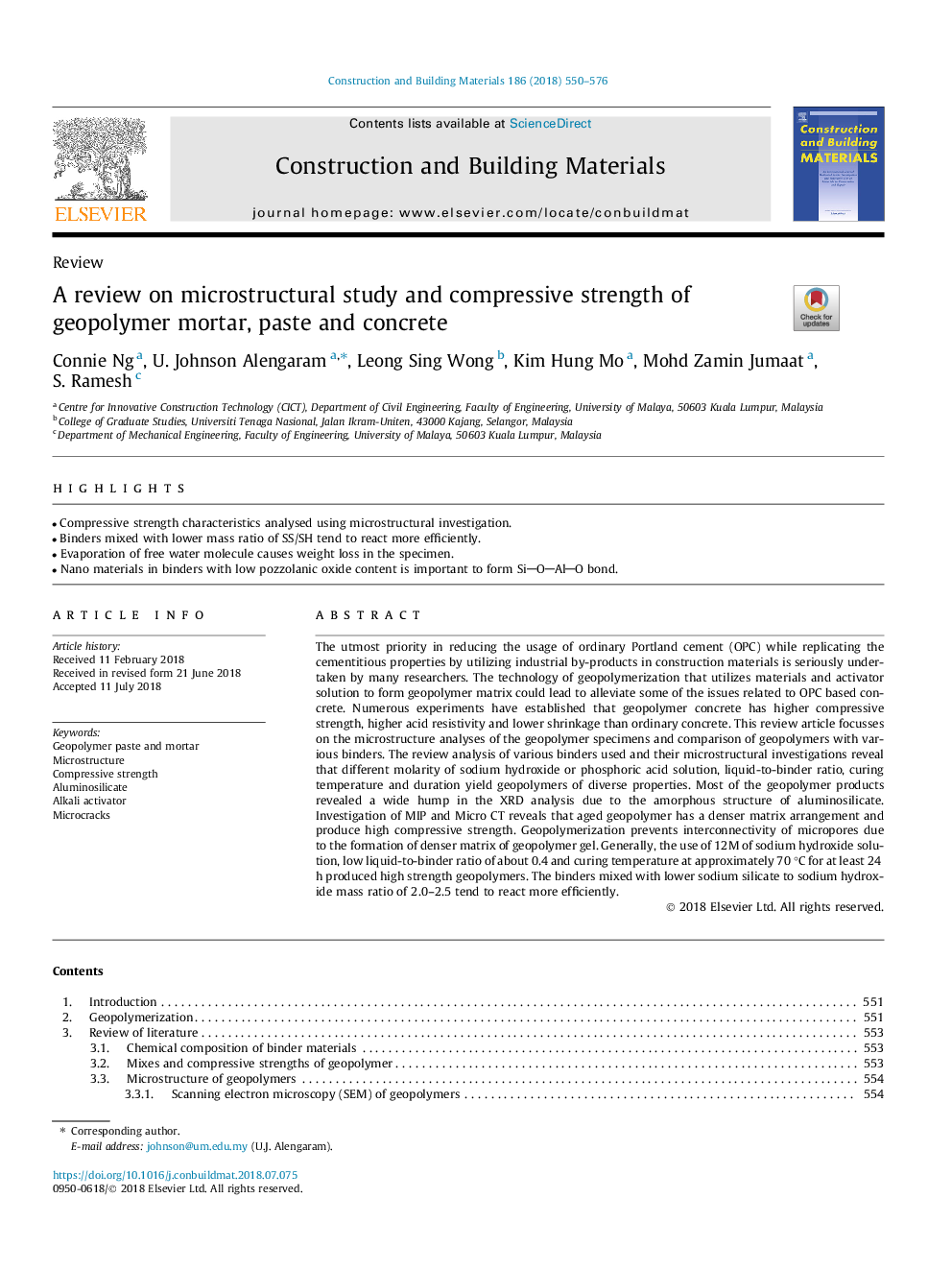| Article ID | Journal | Published Year | Pages | File Type |
|---|---|---|---|---|
| 6711453 | Construction and Building Materials | 2018 | 27 Pages |
Abstract
The utmost priority in reducing the usage of ordinary Portland cement (OPC) while replicating the cementitious properties by utilizing industrial by-products in construction materials is seriously undertaken by many researchers. The technology of geopolymerization that utilizes materials and activator solution to form geopolymer matrix could lead to alleviate some of the issues related to OPC based concrete. Numerous experiments have established that geopolymer concrete has higher compressive strength, higher acid resistivity and lower shrinkage than ordinary concrete. This review article focusses on the microstructure analyses of the geopolymer specimens and comparison of geopolymers with various binders. The review analysis of various binders used and their microstructural investigations reveal that different molarity of sodium hydroxide or phosphoric acid solution, liquid-to-binder ratio, curing temperature and duration yield geopolymers of diverse properties. Most of the geopolymer products revealed a wide hump in the XRD analysis due to the amorphous structure of aluminosilicate. Investigation of MIP and Micro CT reveals that aged geopolymer has a denser matrix arrangement and produce high compressive strength. Geopolymerization prevents interconnectivity of micropores due to the formation of denser matrix of geopolymer gel. Generally, the use of 12M of sodium hydroxide solution, low liquid-to-binder ratio of about 0.4 and curing temperature at approximately 70â¯Â°C for at least 24â¯h produced high strength geopolymers. The binders mixed with lower sodium silicate to sodium hydroxide mass ratio of 2.0-2.5 tend to react more efficiently.
Related Topics
Physical Sciences and Engineering
Engineering
Civil and Structural Engineering
Authors
Connie Ng, U. Johnson Alengaram, Leong Sing Wong, Kim Hung Mo, Mohd Zamin Jumaat, S. Ramesh,
